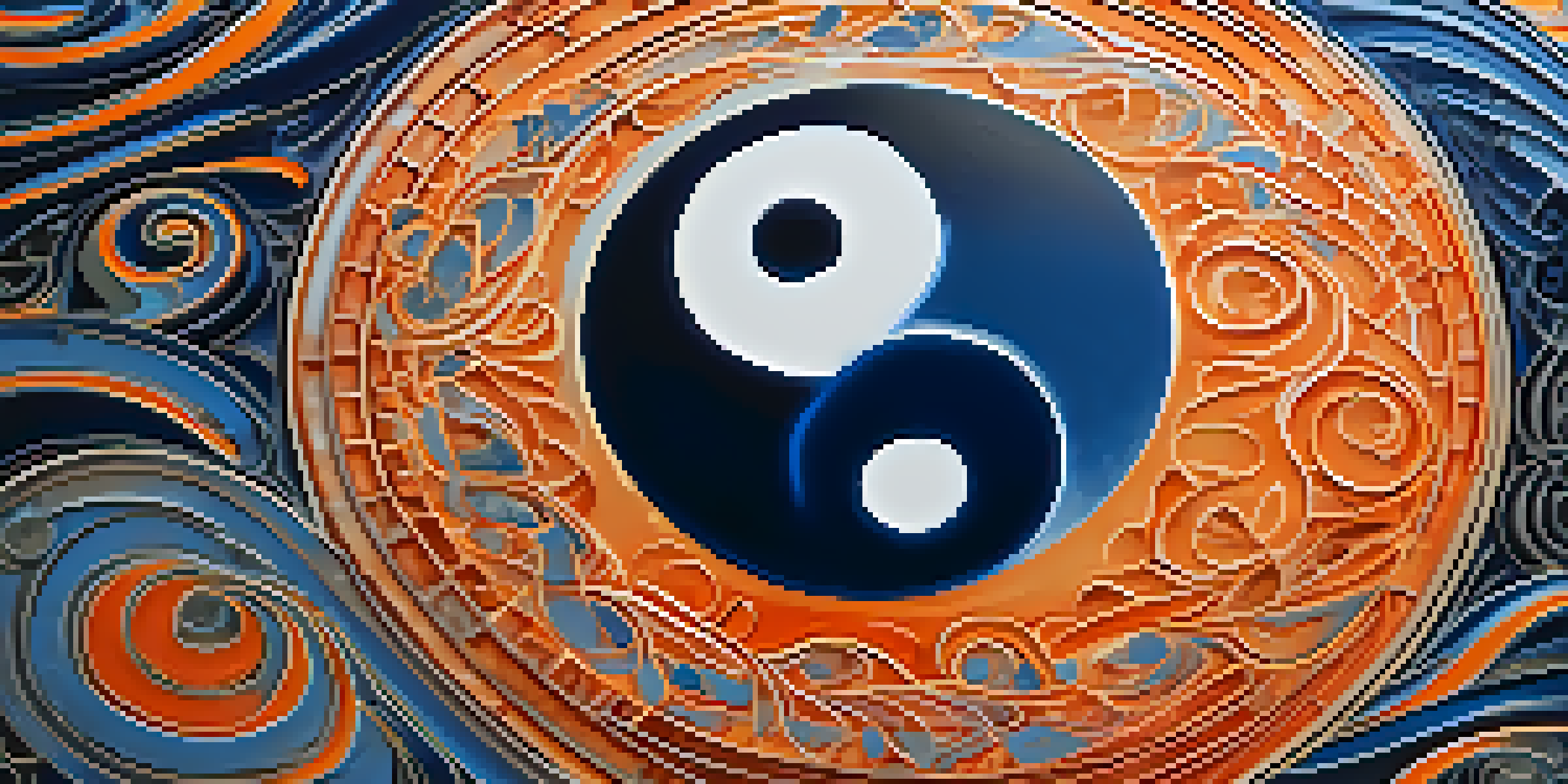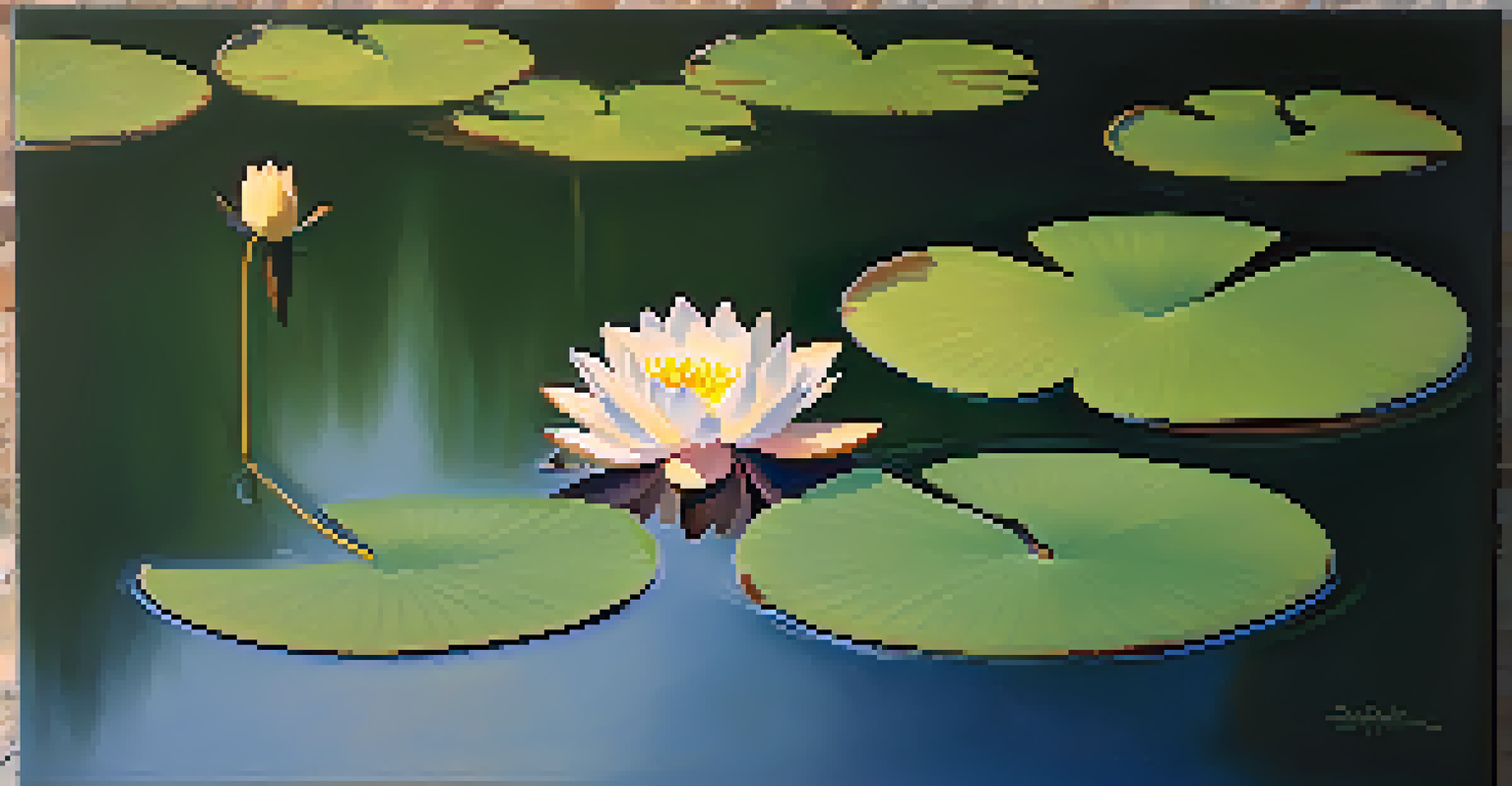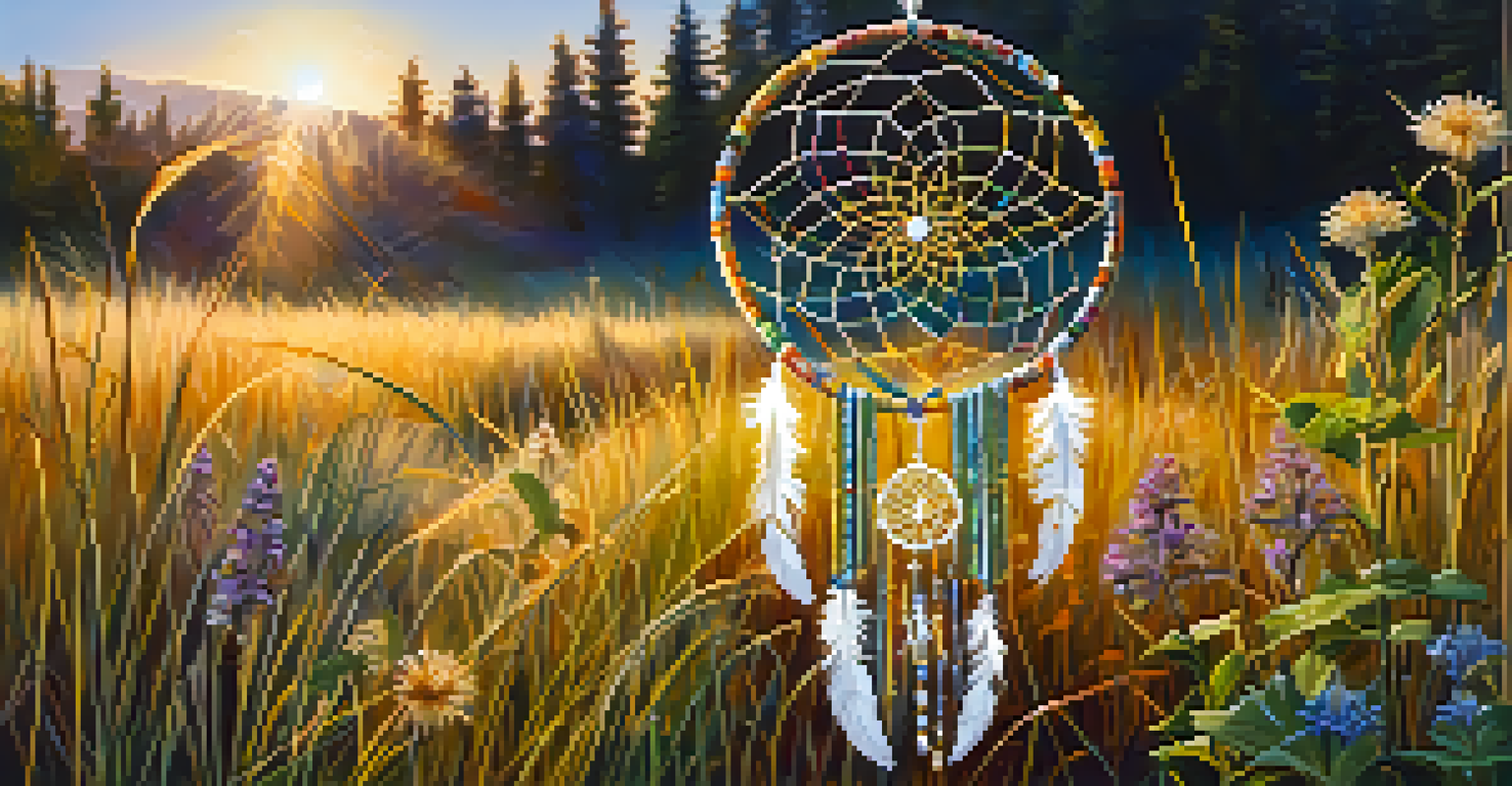Sacred Symbols in Painting: A Global Perspective

Understanding Sacred Symbols and Their Importance
Sacred symbols are visual representations that convey deep spiritual meanings. They can be found in various cultures around the world, reflecting beliefs, rituals, and values. For instance, the lotus flower in Hinduism represents purity and enlightenment, while the yin-yang symbol in Taoism embodies balance.
Symbols are the language of the spirit.
These symbols serve as a bridge between the material and spiritual worlds, helping individuals connect with the divine. Artists often incorporate these symbols into their works to evoke emotions and provoke thought. Understanding the significance of these symbols enhances our appreciation of the artwork and its context.
Moreover, sacred symbols can vary greatly from one culture to another, each carrying unique connotations. This diversity invites viewers to explore different perspectives and deepen their understanding of various belief systems. In this way, sacred symbols in painting are both personal and universal.
Sacred Symbols in Ancient Civilizations
Many ancient civilizations utilized sacred symbols in their art to communicate their beliefs. For instance, the Egyptians revered the ankh, symbolizing life and immortality, often depicted in their tomb paintings. These symbols were not only decorative but also served a functional purpose in guiding souls in the afterlife.

Similarly, the Greeks incorporated sacred symbols like the olive branch, representing peace and victory, in their pottery and mosaics. Such symbols were deeply rooted in mythology and were used to honor gods and commemorate significant events. Through these artworks, we gain insights into their values and societal structures.
Sacred Symbols Bridge Cultures
Sacred symbols serve as visual representations of deep spiritual meanings, connecting diverse cultures and beliefs.
The use of sacred symbols in ancient art highlights how these civilizations sought to convey complex ideas through simple images. This practice laid the foundation for future artists, who continued to explore the relationship between art and spirituality. Today, we can still see the influence of these ancient symbols in contemporary art.
Religious Influence on Sacred Symbols in Art
Religion has played a pivotal role in the creation and interpretation of sacred symbols in art. In Christianity, for example, the cross is a powerful symbol of sacrifice and redemption, frequently appearing in paintings and sculptures. Artists like Michelangelo and Caravaggio used this symbol to convey profound theological messages through their masterpieces.
Art is the most beautiful of all lies; it is the most profound way to understand the world.
In contrast, Islamic art often avoids figurative representation, instead focusing on geometric patterns and calligraphy. The intricate designs found in mosques and manuscripts serve as a reflection of the divine, inviting contemplation and reverence. This unique approach emphasizes the spiritual over the literal, showcasing the diversity of sacred symbols.
The impact of religion on sacred symbols extends beyond individual faiths, influencing global art movements. As artists engage with these symbols, they often reinterpret them to resonate with contemporary audiences. This ongoing dialogue between tradition and innovation enriches our understanding of sacred art across cultures.
Sacred Symbols in Indigenous Art Forms
Indigenous cultures worldwide have a rich tradition of using sacred symbols in their art. For example, Native American tribes often incorporate symbols like the dreamcatcher, which represents protection and guidance. These symbols are deeply rooted in their spiritual beliefs and are expressed through various mediums, including pottery and weaving.
In African art, symbols such as the Adinkra symbols from Ghana convey wisdom and community values. Each symbol tells a story, often passed down through generations, and plays a vital role in social identity. The vibrant colors and intricate patterns serve not only aesthetic purposes but also carry significant cultural narratives.
Art Reflects Religious Influences
Religion significantly shapes the creation and interpretation of sacred symbols in art, influencing global artistic movements.
The use of sacred symbols in indigenous art highlights the interconnectedness of spirituality and daily life. These artworks serve as reminders of cultural heritage, reinforcing a sense of belonging. By appreciating these symbols, we can foster deeper connections with diverse cultures and their worldviews.
Modern Interpretations of Sacred Symbols
In contemporary art, artists continue to explore and reinterpret sacred symbols in innovative ways. Many modern artists blend traditional symbols with new techniques, creating pieces that resonate with today's audiences. For instance, the use of mandalas in modern painting often symbolizes harmony and balance, appealing to a global audience seeking mindfulness.
Moreover, street art has emerged as a vibrant platform for expressing sacred symbols. Artists incorporate motifs from various cultures to challenge societal norms and provoke thought. This fusion of tradition and modernity allows sacred symbols to evolve, ensuring their relevance in contemporary discourse.
The reinterpretation of sacred symbols in modern art invites viewers to engage with these age-old concepts in fresh ways. By reimagining the meanings behind these symbols, artists encourage dialogue about spirituality and culture. This dynamic exchange enriches our understanding of both the symbols and the artists' perspectives.
The Role of Nature in Sacred Symbols
Nature often serves as a powerful source of inspiration for sacred symbols in art. Many cultures view natural elements like trees, animals, and celestial bodies as sacred representations of the divine. For example, the tree of life is a common motif found in various religious traditions, symbolizing interconnectedness and growth.
Artists frequently draw upon these natural symbols to convey deeper meanings in their work. The depiction of a phoenix rising from the ashes, for instance, symbolizes rebirth and transformation, resonating across cultures. By incorporating these symbols, artists create a visual language that speaks to universal human experiences.
Nature Inspires Sacred Art
Natural elements often inspire sacred symbols, highlighting humanity's connection to the earth and spirituality.
The relationship between nature and sacred symbols emphasizes the importance of the environment in spiritual beliefs. As society grapples with environmental issues, these symbols serve as poignant reminders of our connection to the earth. Art becomes a vehicle for exploring these themes, encouraging reflection on our place within the natural world.
The Future of Sacred Symbols in Art
As society continues to evolve, so too will the interpretation and use of sacred symbols in art. Artists are increasingly blending cultural traditions, creating hybrid symbols that reflect a globalized world. This fusion invites new conversations about identity, spirituality, and community in an interconnected society.
Moreover, technology is playing a significant role in how sacred symbols are expressed. Digital art and virtual reality allow for immersive experiences that engage audiences in unique ways. This innovation may lead to a resurgence in the appreciation of sacred symbols, making them accessible to wider audiences.

Looking ahead, the future of sacred symbols in art promises to be dynamic and inclusive. As artists navigate the complexities of modern life, these symbols will continue to serve as vital tools for expression and connection. Embracing this evolution allows us to celebrate the rich tapestry of human experience through art.